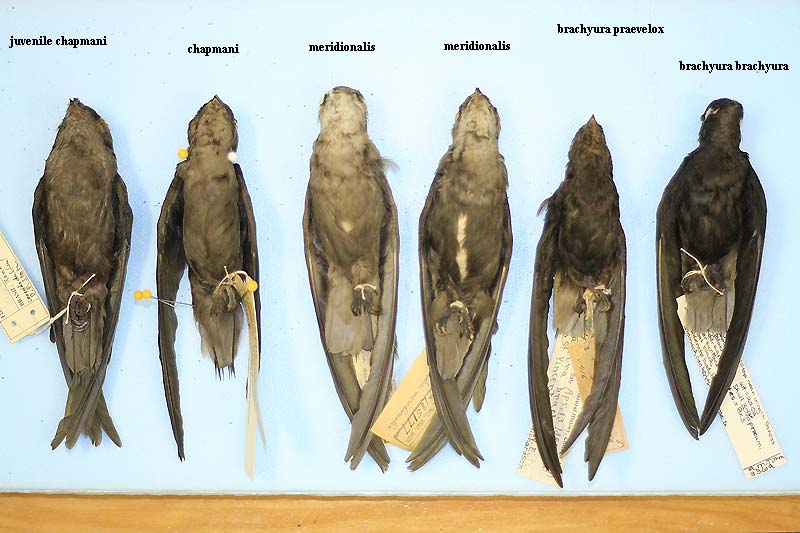
Thanks to the generous cooperation of David Willard and the Field Museum of Natural History, Chicago in late February 2009, I am able to present comparisons of Sick's Swift Chaetura [andrei] meridionalis with various other forms of Chaetura.
CLICK HERE to see a candidate meridionalis from Texas.
meridionalis from Paraguay and southern Brazil, but note that the leftmost skin is the only juvenile, and the rightmost skin is actually from Chiriqui, western Panama in August - presumed to be an extralimital record:
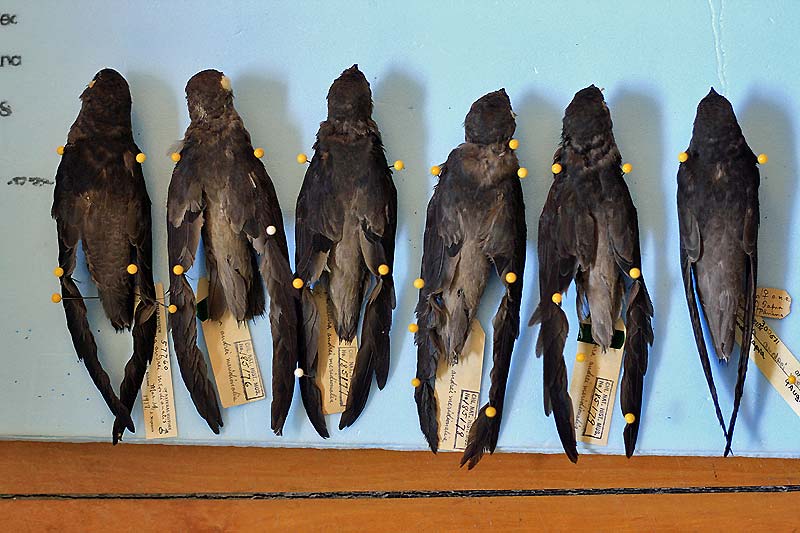
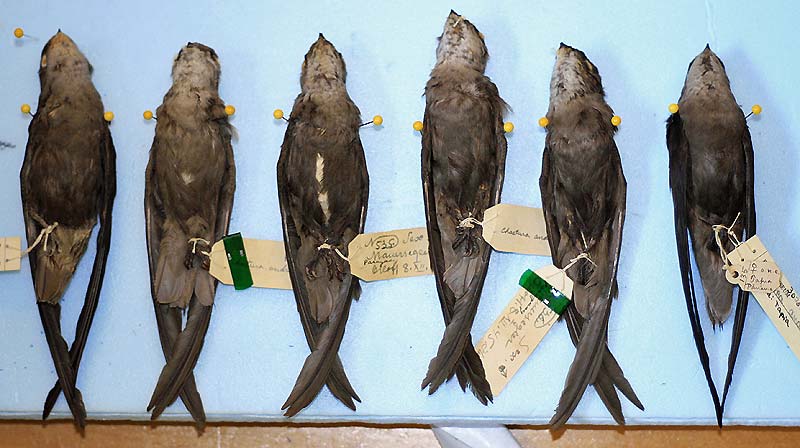
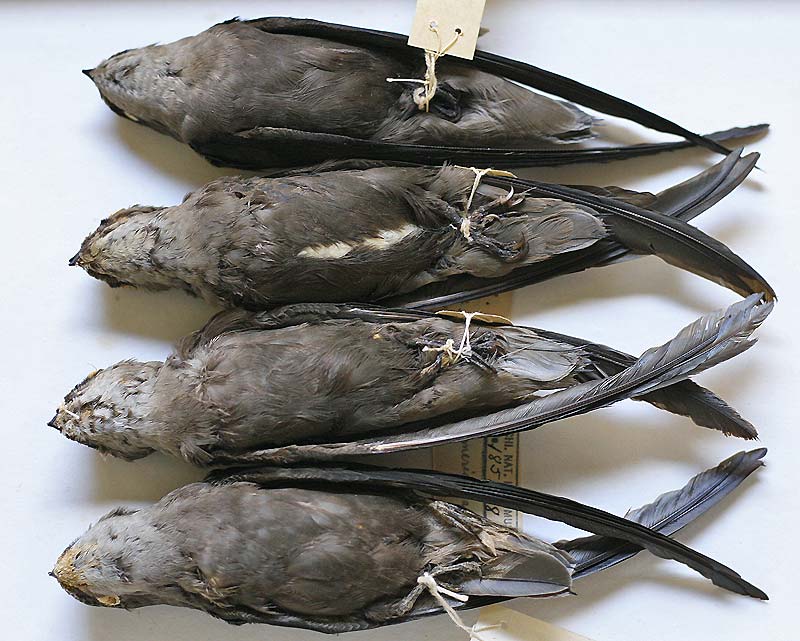

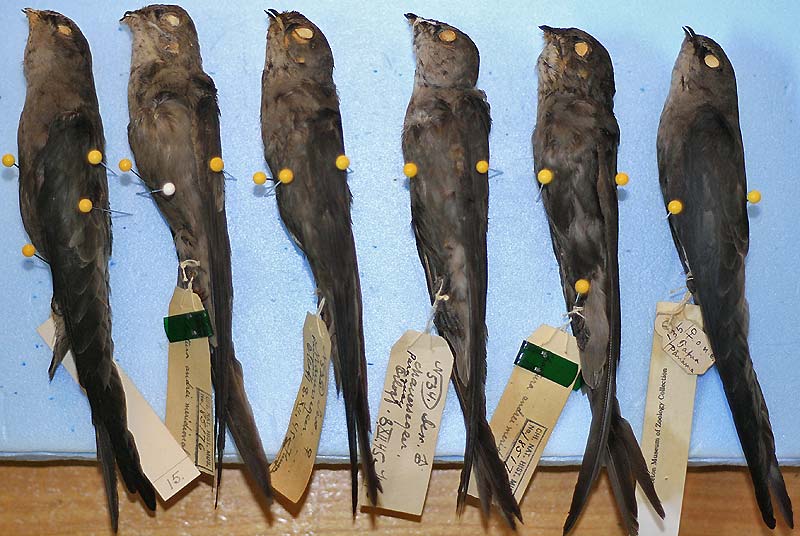
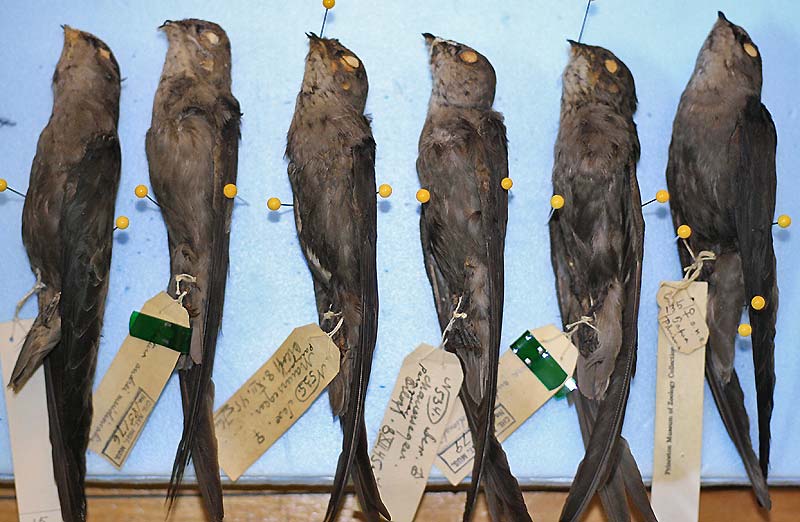
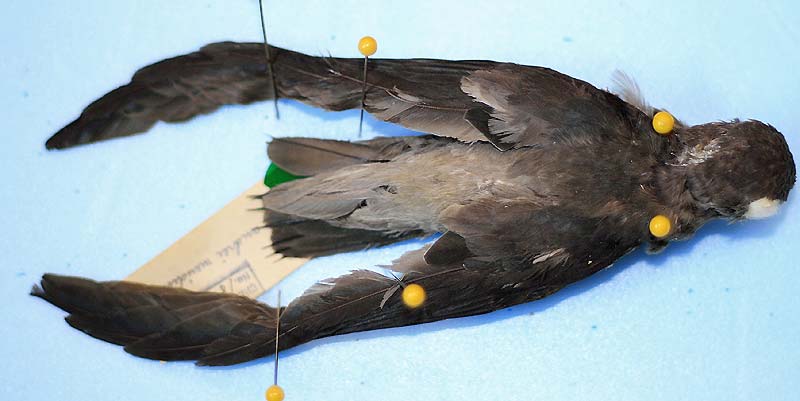
The taxon meridionalis is unique among Chaetura (except for brachyura - see below) in having the undertail coverts (from approximately behind the legs) paler than the belly. The contrast is not dramatic but is easily detectable. I examined individually 139 pelagica skins, selecting those with the "most" contrast between the belly and the undertail coverts - see the five skins below. In the hand and from any angle, there was no paling of the undertail coverts in any of the 139 pelagica skins. The majority had the undertail coverts darker than the belly, while a small minority had them concolorous.
pelagica: NOTE: the rightmost bird is aberrant in having pale retrices - clearly paler than the dusky undertail coverts; no other pelagica skin came anywhere close to this individual in this regard:
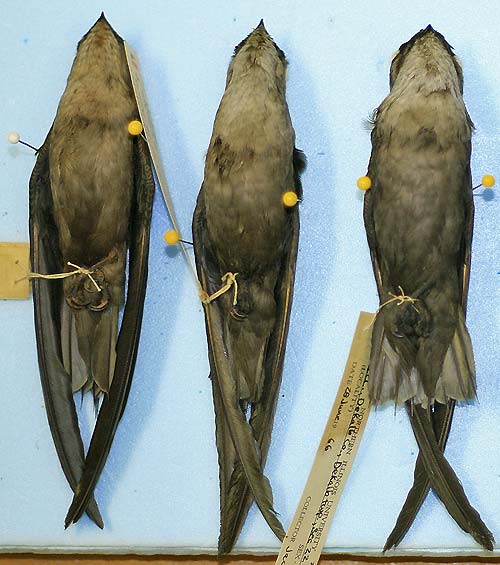

I also selected from 139 pelagica skins those with the palest/most contrasting rear half to the upperparts - see the four skins below. NOTE: all are from the May/June period where fading and wear leads to the most contrast, prior to molt:
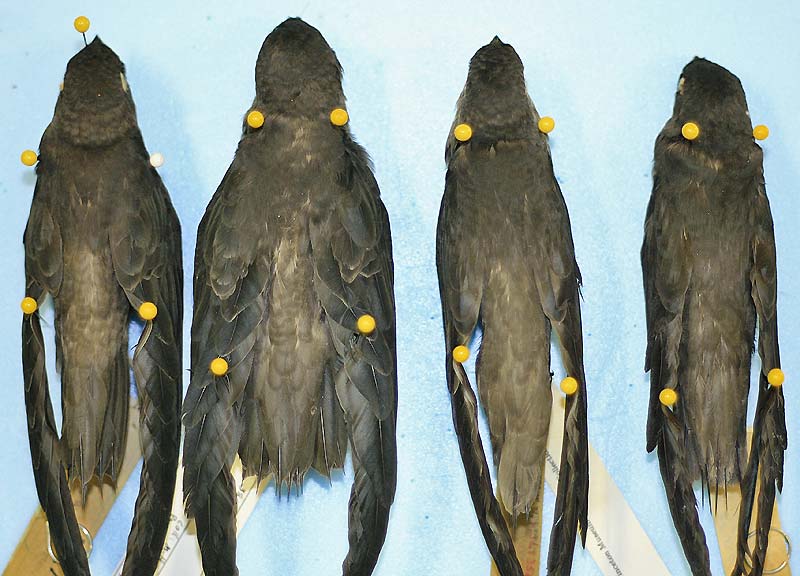
meridionalis vs pelagica:
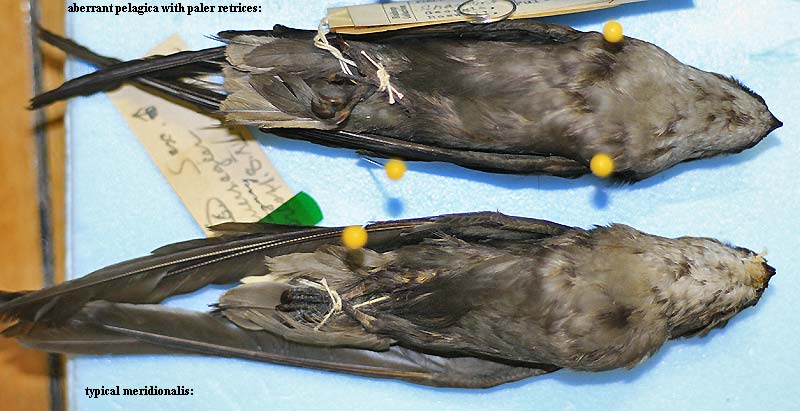
- note on the above comparison that the point of contrast on the aberrant pelagica is at the retrices/utc boundary, due to the dark utcs - whereas on meridionalis the contrast boundary is below the legs where the utcs become pale and match the tone of the retrices.
- the typical pelagica show no contrast line on the rear underparts, unlike meridionalis:
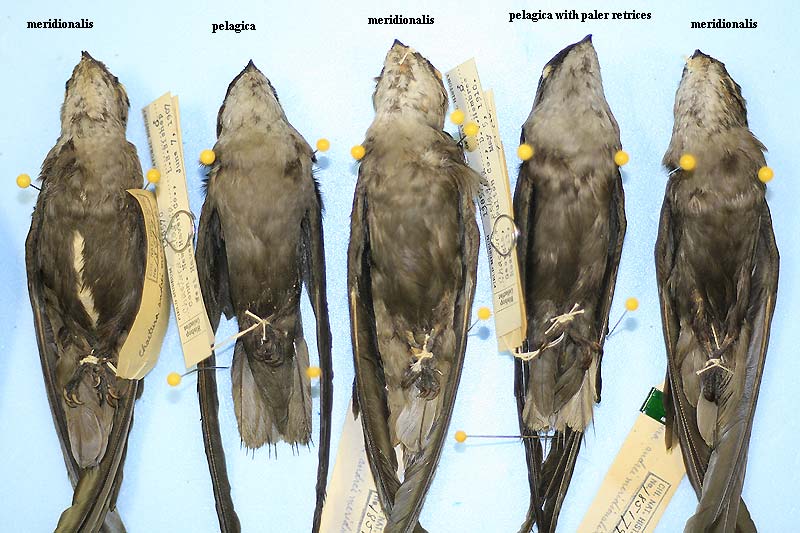
looking at the upperparts, the palest (May/June) pelagicas are still darker in the rear than meridionalis (except for the juvenile), and the pale area slightly less extensive between the wings; all pelagica except the aberrant individual have darker retrices than meridionalis:
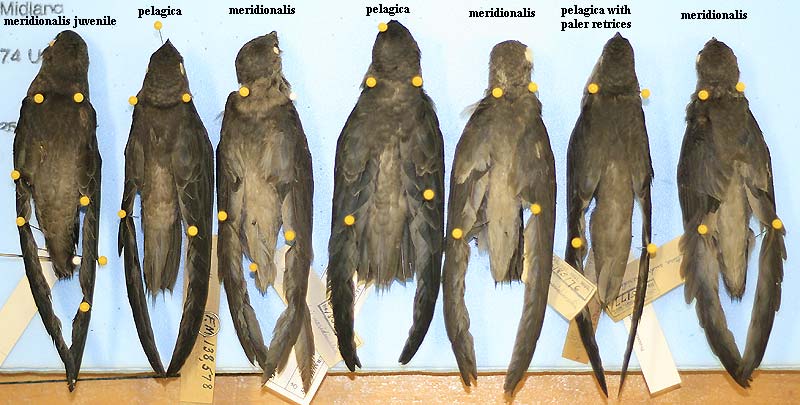
vauxi subspecies:
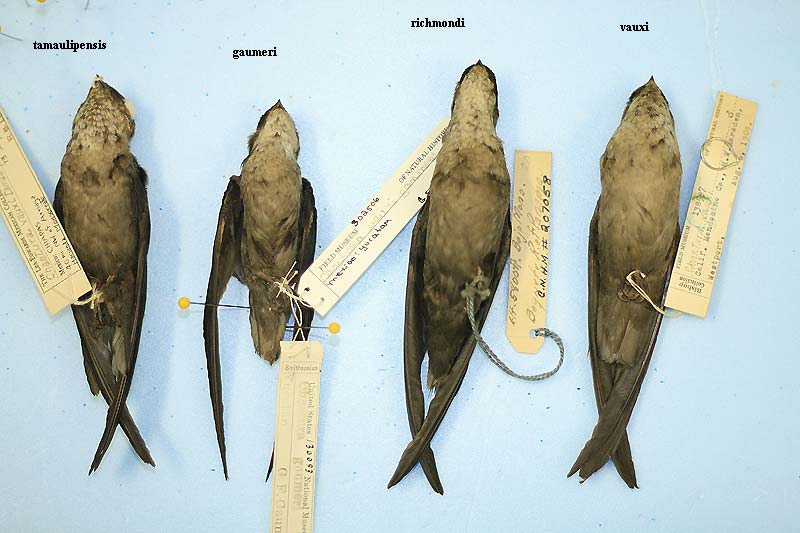
meridionalis vs vauxi subspecies: all forms of vauxi are paler on the belly than meridionalis:
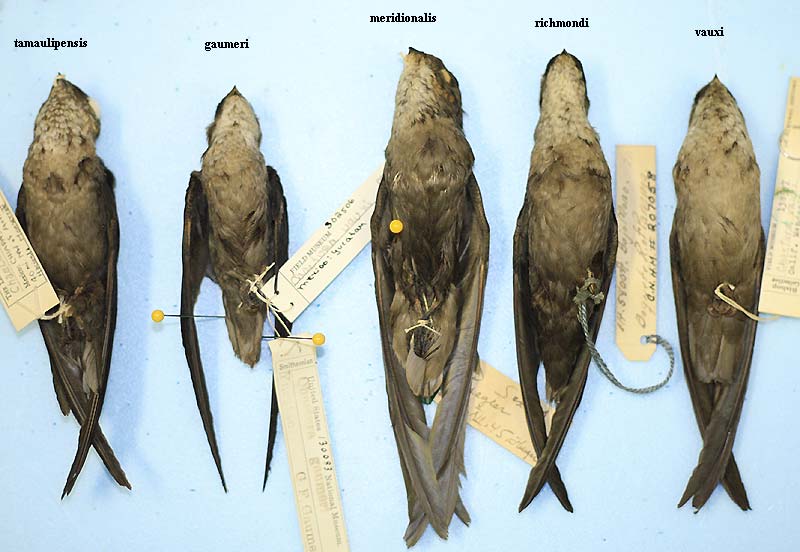
from above only vauxi richmondi matches the paleness of meridionalis - yet it also has darker, more-contrasting anterior upperparts; note that nominate vauxi is slightly darker in the rear than meridionalis:
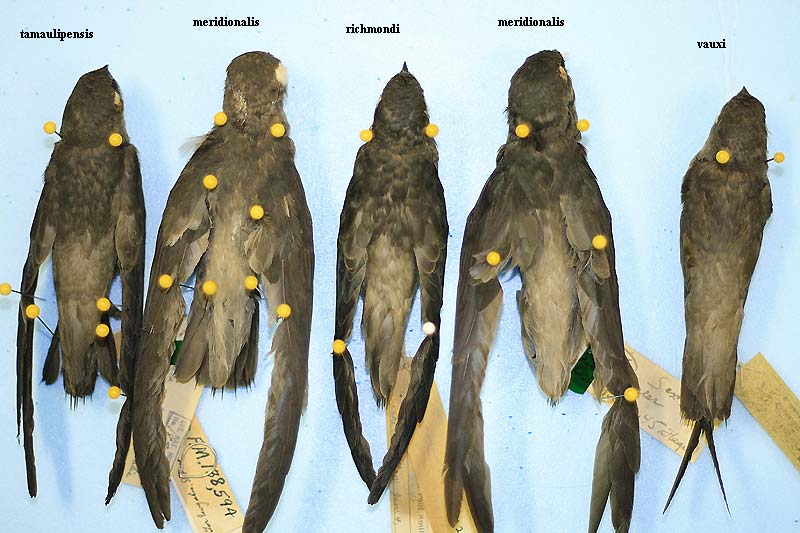
chapmani - a rarely seen taxon with few specimens; these are the only two at FMNH; this and meridionalis are the only South American Chaetura that are known to be strong Austral migrants:
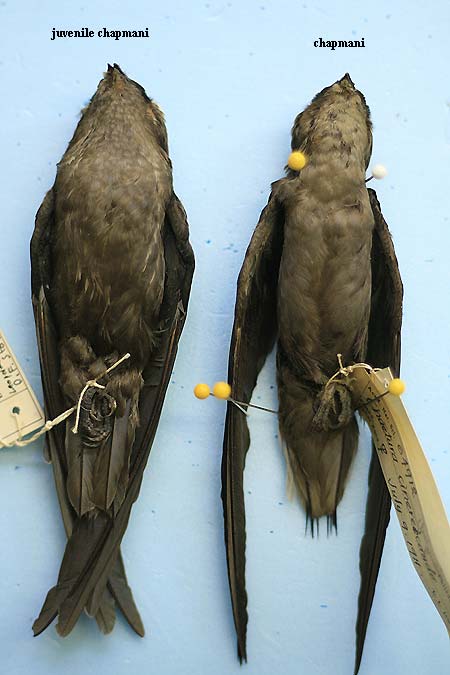
meridionalis vs chapmani and brachyura: note that while brachyura is the only other Chaetura with (much) paler undertail coverts, its almost-black belly/breast/throat are very different to all the other Chaetura taxa shown here:
